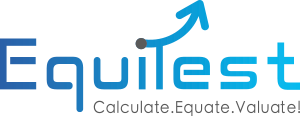Understanding S-Corps, C-Corps, and LLCs: Navigating the Alphabet
MediaRead more to better understand S-Corps, C-Corps, and LLCs
Understanding S-Corps, C-Corps, and LLCs: Navigating the Alphabet
It is quite difficult to delves into the intricacies of business entities and structures, most especially, the topic on S-Corps, C-Corps, and LLCs entail. Each outsourcing option has its benefits and drawbacks and knowing these can assist in a clear decision regarding the best pale for your business. This simple breakdown of the fundamentals of every structure and the way in which business valuation software powered by AI might help make the best decision shall come from this post.
Outline
- Introduction
- Importance of choosing the right business structure
- Role of AI-powered business valuation software
- S-Corporations (S-Corps)
- Definition and key features
- Advantages
- Disadvantages
- C-Corporations (C-Corps)
- Definition and key features
- Advantages
- Disadvantages
- Limited Liability Companies (LLCs)
- Definition and key features
- Advantages
- Disadvantages
- Comparative Analysis
- Tax implications
- Liability protection
- Management structure
- Suitability for different types of businesses
- How AI-Powered Business Valuation Software Can Help
- Enhanced data analytics
- Improved accuracy and reduced bias
- Real-time risk assessment
- Conclusion
- Summary of key points
- Final thoughts on choosing the right business structure
S-Corporations (S-Corps)
S-Corporations refer to a specific kind of corporation mainly aimed at preventing the issue of double taxation. S Corporations permit the corporation’s income, losses, deductions, and credits to flow through to the shareholders for federal tax purposes.
Advantages
• Pass-through Taxation: In this system, the income is taxed at the individual level that is at the level of shareholders.
• Liability Protection: Liabilities are the last thing shareholders have to worry about since they are protected by the company’s liabilities.
• Attractive to Investors: It was easier to get capital through the issuing of shares in the company.
Disadvantages
• Shareholder Restrictions: May have a maximum of 100 shareholders, and all the shareholders must be the citizens of the United States, or reside in the country.
• Operational Complexity: It means they require more formalities and there is likely to be more documentation than in LLCs.
C-Corporations (C-Corps)
C-Corporations are incorporated businesses that are taxed on their profits after which the shareholders are taxed on the profits they receive in form of dividends.
Advantages
• Unlimited Shareholders: The shareholders are free to include as many of them as possible and from which part of the world they want.
• Capital Raising: Can easily attracted investors and issue share to the public for sale, hence, easy to get capital.
• Perpetual Existence: A corporation goes on existing even if the ownership is transferred from one person to another.
Disadvantages
• Double Taxation: Corporate tax and taxes on the corporate shareholders are levied on the income accruing from investment.
• Regulatory Requirements: Reports and corresponding compliance procedures that are stricter and more comprehensive than before.
Limited Liability Companies (LLCs)
Particularly, LLCs are formed with a characteristic mix of corporation’s limited business risk with partnership’s structural and tax advantages.
Advantages
• Flexibility: Less of bureaucracy and more of the management freedom.
• Pass-through Taxation: Income is not taxed at the corporate level but at the individual member level hence the identified firms.
• Limited Liability: They provide members with limited liability from the responsi-bilities of the company.
Disadvantages
• Self-Employment Taxes: I do not know if members have to pay self employment taxes on the portion of income that they receive as their share.
• Varying State Laws: It is important for one to note that you may find that that regulations concerning LLC are not same across the states.
Comparative Analysis
Tax Implications
• S-Corps: Application of a single level of taxation at the level of the shareholders.
• C-Corps: This system has been considered to bring problems such as taxation of revenue at the corporate level as well as at the personal level by the shareholders.
• LLCs: Some forms of taxes are passed through but members may be subjected to employment tax.
Liability Protection
• S-Corps and C-Corps: This means that management and shareholders are sheltered form corporate risks.
• LLCs: It has Limited liability protection to all its members.
Management Structure
• S-Corps and C-Corps: Higher degree of official authorization with a board of directors.
• LLCs: Leaders are usually formal irrespective of the centre being characterized by a flexible management structure.
Applicability for Different Kinds of Businesses
• S-Corps: Thus, it is mostly suitable for small and medium enterprises who do not want to suffer double taxation.
• C-Corps: Most appropriate for large companies that are in a process of seeking capital from stock sale.
• LLCs: Most suitable for the companies that want flexibility and use pass-through taxation.
How the Business Valuation Software Purposed on the Use of Artificial Intelligence Can Assist
Enhanced Data Analytics
The computer-generated data analysis through AI can work on complex structured and unstructured data, receiving financial information, trends, and standards from the market.
New bodies of work have provided higher accuracy and less bias.
AI algorithms operate based on numbers and mechanical and logical prerequisites; they do not inject emotions and cognitive biases into the valuations.
Real-Time Risk Assessment
One of the critical advantages of using AI is that it can work in real time on information received and produce real-time risk evaluations and management.
Conclusion
Selecting the proper business structure is very important in the functioning of a business enterprise. Each and every one of the S-Corps, C-Corps, and LLCs has its advantages and low sides, thus to make the best decision, one needs to get to know them. The application of AI business valuation software would add another layer to your decision making system by offering factual analysis.
FAQ
Q1: What is the main difference between S-Corps and C-Corps?
A1: The main difference lies in taxation. S-Corps have pass-through taxation, meaning income is taxed at the shareholder level, while C-Corps face double taxation at both the corporate and shareholder levels.
Q2: Can an LLC be converted to a corporation?
A2: Yes, an LLC can be converted to a corporation through a legal process called statutory conversion or by forming a new corporation and transferring the LLC's assets and liabilities to it.
Q3: How does AI-powered business valuation software improve accuracy?
A3: AI-powered software uses algorithms based on quantitative data and objective criteria, reducing human bias and improving the accuracy of valuations.
Q4: What are the shareholder restrictions for S-Corps?
A4: S-Corps are limited to 100 shareholders, and all shareholders must be U.S. citizens or residents.
Q5: Why might a business choose a C-Corp structure?
A5: A C-Corp structure is ideal for businesses looking to raise capital through stock sales and for those seeking unlimited shareholders without nationality restrictions. Understanding the nuances of different business structures is essential for making informed decisions. By leveraging AI-powered business valuation software, you can navigate these complexities with greater confidence and precision.
Related items
Media
(To unmute the video clip, click the video)


